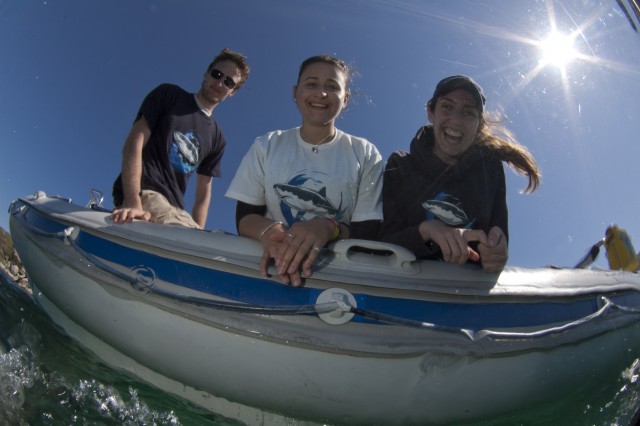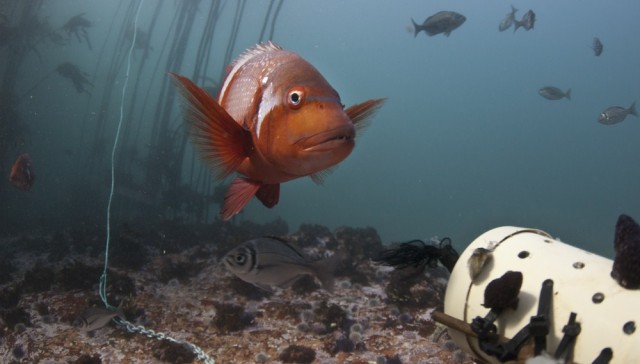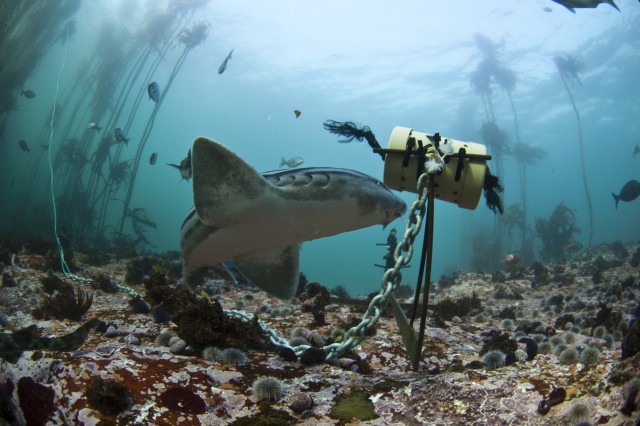Meet the BRUV(ver)hood
We have a new addition to our team here at the University of Cape Town, in the form of vivacious MSc Conservation Biology candidate, Carolyn Sanguinetti. Hailing from the UK, Carolyn received her BSc (Hons) in Wildlife Conservation from the University of Kent before moving to Africa, where she has been working for the past two years. In the Democratic Republic of Congo, Carolyn was part of a team researching chimpanzees, gorillas and the okapi (we’re pretty jealous!). Her particular interest lies in devising innovative methods to monitor the environment and she has previous experience using camera traps to monitor chimpanzee tool-use behaviour. A good fit for our BRUV project? I think so …
Carolyn joins me and Ralph Watson as part of the team who is now going out monthly to sample False Bay’s waters. Whilst Ralph sifts through our data to focus on the chondrichthyans, Carolyn is embarking on an investigation of the differences in fish diversity and relative abundance inside and outside marine protected areas (MPAs).

Ralph Watson, Carolyn Sanguinetti and Lauren De Vos soaking up some sunshine. Photo courtesy Steve Benjamin
Why marine protected areas?
South Africa’s first MPA was declared in 1964. Tsitsikamma is our oldest coastal protected area, and this long history of protection (coupled with its location along our coastline, which makes it species-rich according to the ‘laws’ of biogeography on the SA coast, and the amount of high profile reef it encompasses) makes it a truly breath-taking region. Rather poignantly, Tsitsikamma was the site of development for BRUVs in SA, pioneered by Albrecht Götz (a co-worker on this project) and his PhD student, Anthony Bernard.
There is much research, both locally and internationally, which points to the benefit of MPAs in recovering fish populations and protecting sensitive habitats. However, if we are to develop an effective network of MPAs along our coastline, we must understand how best they should be designed, located and enforced. Part of this understanding comes from long-term monitoring of our existing MPAs, and establishing a baseline of data collection from our newly promulgated MPAs against which we can monitor future changes.
Inside versus Outside
Placing BRUVs inside and outside MPAs allows us to compare fish diversity and relative abundance. In the future, this will allow us to investigate the effectiveness of MPAs, as well as explore ideas around community ecology in our temperate waters, and how it may differ with and without protection.
Studies in this format have been conducted along the coastline using controlled angling and SCUBA transects, but it is useful for us to test whether the BRUV method is suitable for these investigations too …
Join us for a day on the water
Rather than explain what we do in words, I put together a quick little video from our trip on Tuesday this week which summarises our day in a (brief!) 4 minutes. You don’t get to see the late night beforehand, which is spent charging cameras, loading bait and checking datasheets (and checking, and re-checking, the weather forecast!), nor the work we do at the end of the day to offload equipment, wash down the boat and finally collapse! However, it will hopefully give you a first taste of what a day at sea entails … Hopefully more of this to follow.
Follow the link, plug in a good set of headphones and enjoy!


Leave a Reply
You must be logged in to post a comment.